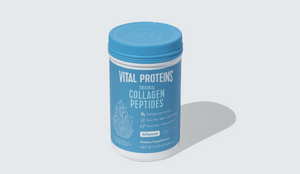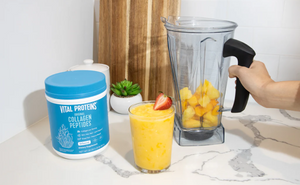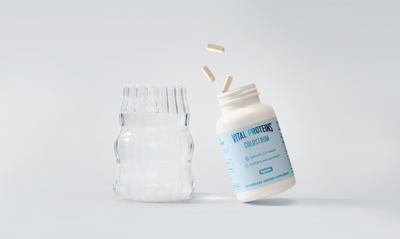Incorporating plants into your home is a perfect first step if getting into gardening is your ultimate goal. Houseplants also add quite a bit of flair to any room, so you really can’t go wrong with introducing plants to your personal space. However, it can seem a bit confusing in terms of what to choose, and perhaps you tried the houseplant thing before, but didn’t have much luck. We recently spoke with a few experts who gave us some great beginner’s tips and advice when it comes to caring for houseplants, so read on and get inspired to enjoy some fresh greenery in your home.
How to Care for Houseplants: Where to Start
Before jumping straight into the car and heading to your local plant store, it’s best to do some initial research. “Make sure you understand the light and water requirements for the plants you are interested in and figure out if you can reasonably meet those requirements,” says Sera Rogue, the owner of Red Fern Brooklyn. “If you are someone that travels a lot, maybe the Australian Tree Fern that needs to be constantly watered and misted is not the right pick. You love succulents, but your apartment windows only get indirect sunlight. Skip the succulent and go for a Philodendron. Doing your homework before you shop informs your decisions and leads to happier, healthier plants,” she adds.
Related Articles
Erin Marino, Director of Brand Marketing for The Sill, also notes that the two biggest factors when it comes to picking plants – and keeping them alive – are light and water. “Water is something you can generally control, but light is something you have less control over. If you can't provide your plants with the amount of natural light they need to thrive, you're ultimately setting yourself up for disappointment, she says. “Definitely do some research first to find out what type of light your space receives (from bright direct to low indirect), and what varieties of plants thrive in that type of lighting.”
Another great tip from Nell Foster, the founder of Joy Us Garden, is to avoid impulse buys because a plant is “cute.” “Some of those plants you see for sale are much better suited for a greenhouse than our homes. Start with a smaller plant and work your way up to something larger. They're much less of an expense while you're learning the ropes,” she explains.

How to Care for Houseplants: The “Black Thumb” Myth
If you’re hesitant to incorporate more greenery into your home because you feel as though you struggle to keep anything alive, Rogue notes that the “black thumb” concept is a myth. In other words, we all have it in us to care for plants, it just requires a little attention and knowledge. “Some of the best plants for beginners are those that are more forgiving of challenging water and light requirements. Pothos, Philodendrons, and Fittonia do not need direct light and tend to pop back life if you forget to water them. ZZ Plants (also known as Zamioculcas) and Sansevieria adapt to any lighting condition and only require watering once a month. However, too much water can harm these plants,” Rogue tells Lively.
Annette Gutierrez, the co-owner of Potted in Los Angeles, recommends the Sansevieria plant, or “Mother-in-Law’s Tongue,” as well. “This hardy plant needs very little water, can survive just fine in lower light and actually comes in many more varieties than most people realize,” she tells Lively. “There are black ones, grey ones, yellow ones. Some that get very tall and others that stay short. Some that look like cylindrical sculptures. Some that look like giant fans. They really are one of the coolest plants around.”
Urban Dwellers
If you live in an apartment like me that doesn’t necessarily get a ton of sunlight, you still have plenty of great options. “There is a world of tropicals that thrive on indirect light. I would suggest trying Dracaenas, Palms, Spider Plants, Aglaonemas, Arrowhead Plants, Prayer Plants, or Rubber Plants,” says Rogue. You can also look into the Sansevieria or ZZ Plants as mentioned above because these do fine with lower light situations.
If light is really keeping you from getting more houseplants, Gutierrez says to consider simply leaving a light on. “We’ve seen Pothos doing just great in a completely windowless office just because the lights were left on all day,” she says. “There's a reason you see the Pothos plant in so many different types of indoor spaces – from retail shops, to doctors' offices, to nail salons. They're incredibly resilient, can bounce back from neglect, and can tolerate a wide range of indoor environments,” adds Marino.

General Houseplant Care Tips
After you get your plants home and in the proper lighting environments, being mindful is key to the success of the specimens. “Find out how much water your plants need and make a plan to water them on schedule,” says Rogue. “You can remember to water your plants by making it part of your weekly routine, for example, if you clean the house every Saturday, make watering the plants part of that activity. You could also mark it on your calendar or set a weekly reminder on your phone.” Rogue also notes to check the soil before watering and see that it’s dry to the touch first. After that, you’re ready to roll. “Water your plants fully. Water should pool at the bottom of the saucer. Drainage is also very important. Leave your plant alone for the week and let the soil dry,” she says.
In terms of overwatering vs. under-watering, either will eventually lead to the death of your plant, but overwatering will kill the plant quicker. “When you overwater a plant, you’re essentially smothering its roots,” explains Gutierrez. “Of course, there are some varieties that prefer to stay moist all the time like begonias. But most plants really need to dry out in order to aerate their roots,” she adds.
How to Care for Houseplants: Products to Check Out
Finally, if you’re interested in checking out a couple plant-care-related products, our experts have some great suggestions. “I only use organic products for indoor plant care. Keeping toxic treatments out of your environment is good for your kids, pets, your own health, and better for your specimens in the long run,” notes Rogue. She suggests Neptune’s Harvest Fish Fertilizer to give plants a healthy boost and Neem Oil if you spot any pest on your plants.
Gutierrez adds that a good watering can is often all you need, but one handy tool is a moisture meter. “It takes the guess work out of the ‘does my plant need to be watered?’ question,” she says.
Finally, The Sill actually offers a monthly beginner’s subscription box that sends a new hardy houseplant, already potted, to your door every month to take the guesswork out of it.













